Growing Trees and Shrubs in Pots
Growing Trees and Shrubs in Pots
Rose Gardens, Evergreens, or Small Trees in Containers
Would your deck, patio or porch be enhanced with the upright element of a small tree? Do you want an evergreen shrub for your whisky barrel or large container? Perhaps you’d like a rose garden, but the sunniest space you have is a patio. Or maybe you want to grow a fig tree or other woody plant that’s not hardy on Cape Cod. There are many reasons to grow trees and shrubs in boxes or pots, and we have these 9 tips for your success.
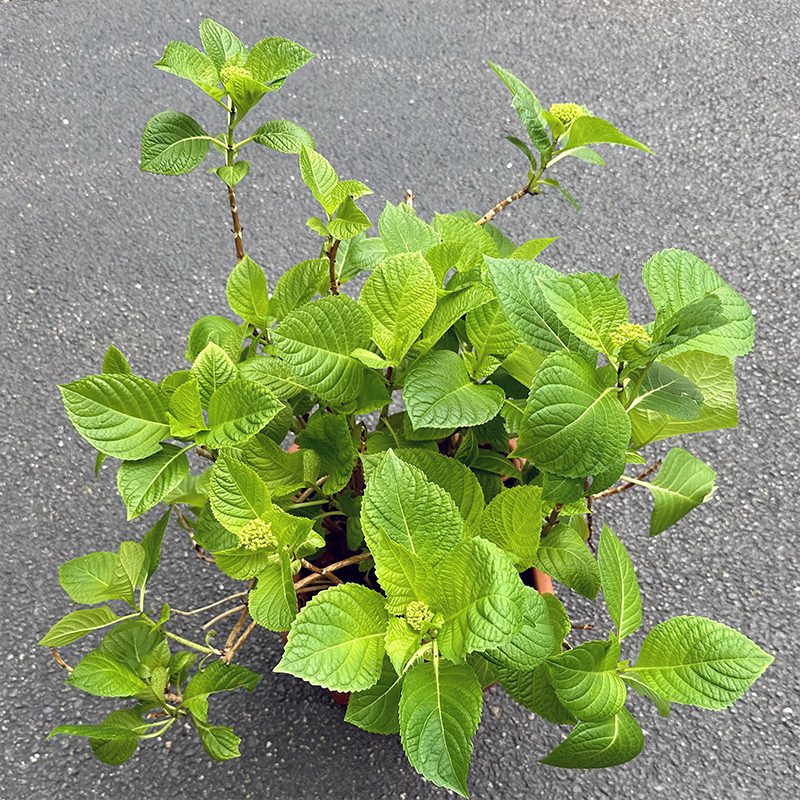
1. Choose a Winter-Proof Container
If your plant will be left outside all year, you’ll want a container that’s not going to crack. There are many plastic, wood, metal and fiberglass pots or boxes to choose from. Many of these can be left outside all winter.
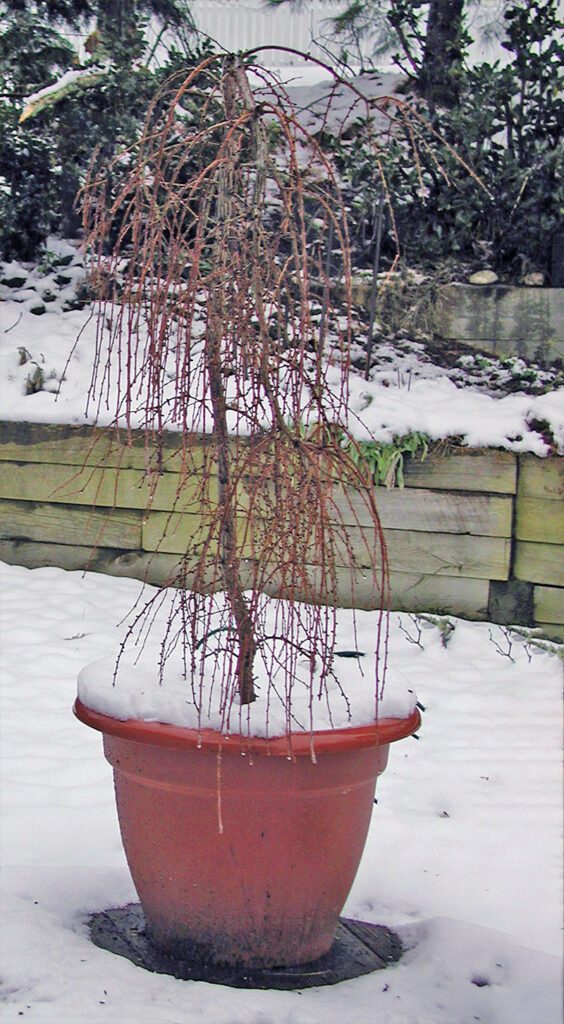
2. Use a Light-Weight Pot if Moving Indoors
Some plants will need to come into a house or cool garage for the winter. Some plants won’t survive outdoors in a container but can be over-wintered in an unheated garage. For those plants that need to be moved in and out every year, choose the lightest pot available.
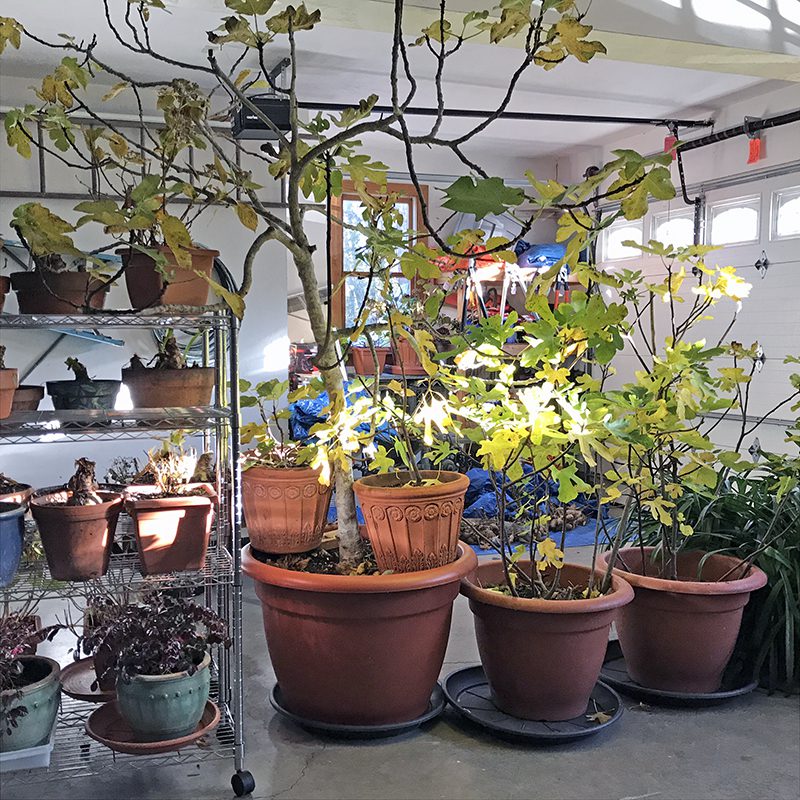
3. Plants Remaining Outside Should Be Hardy 2 Zones Colder
Because the soil in containers typically gets about 20° colder than ground temperatures, the plants that you plan to leave in pots outside through the winter need to be extra hardy. On Cape Cod, where we grow plants that are hardy in a warm Zone 6, that means choosing plants that are hardy to a Zone 4. (Yes, we know that the USDA claims that Cape Cod is in a Zone 7, but most plants that are classified as hardy in a 7 do not do well here. The reality is that unless you live in the outer Cape close to the ocean, our temperatures put us more solidly in a 6b.)
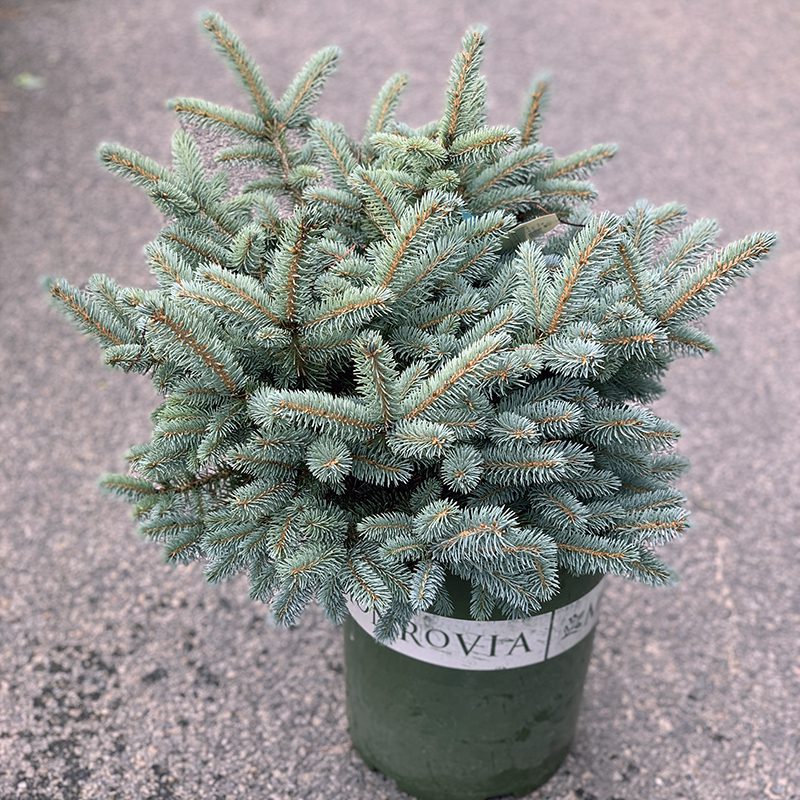
4. The Importance of Drainage Holes and Soil
If you are planting a shrub or tree in a container, be sure that there are holes for drainage and do NOT put any rocks, mulch, or other debris in the bottom of the pot. In smaller containers use a good quality potting mix such as Coast of Maine Bar Harbor Blend. In larger pots use a mix made for raised beds such as Coast of Maine Raised Bed Mix, or a mixture of loam and potting soil. Do not fill your containers with pure compost.
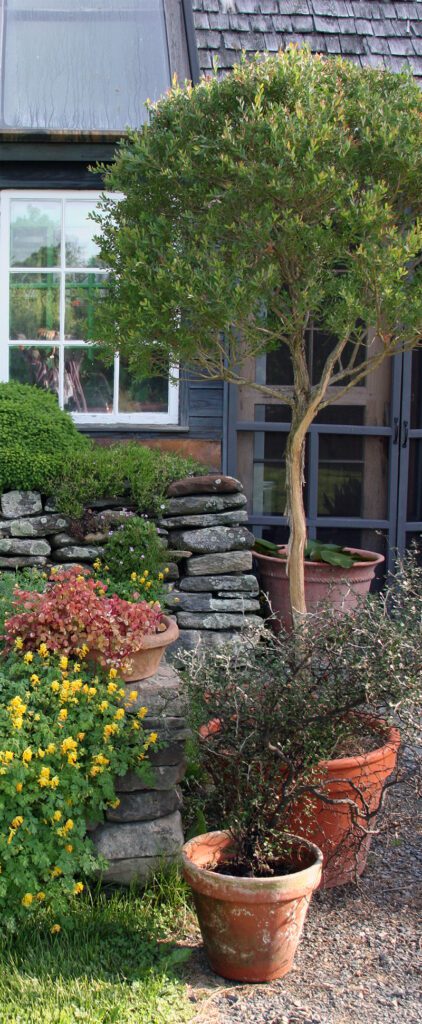
5. Fertilizing and Top-Dressing
Since shrubs and trees typically will remain in containers for several years, it’s important to keep up the soil health and fertility with an annual application of fertilizer and compost. Use an organic fertilizer such as Holly-tone for evergreens and blue Hydrangeas, and Flower-tone or Rose-tone for other flowering plants. Apply this on the surface of the soil in the spring or early summer, and top with an inch of compost. An inch of mulch on top of the compost will help dress up the look of your container and prevent weeds from taking root. (Yes, weed seeds will find their way to your potted shrubs and trees…mulch stops them from germinating.)
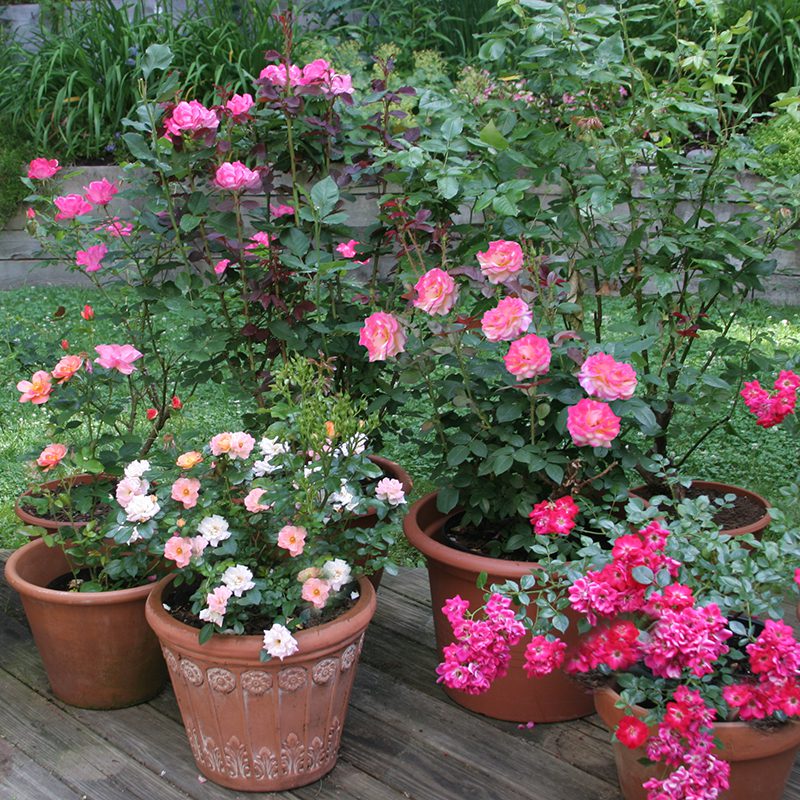
6. Winter Care Indoors
Any shrubs or trees that are over-wintered in a garage or shed should be checked monthly to see if the soil is getting dry. Although these plants will be largely dormant and not using much water, you shouldn’t let the roots dry out. Water well when the soil is dry, but don’t let pots sit for long in saucers filled with water.
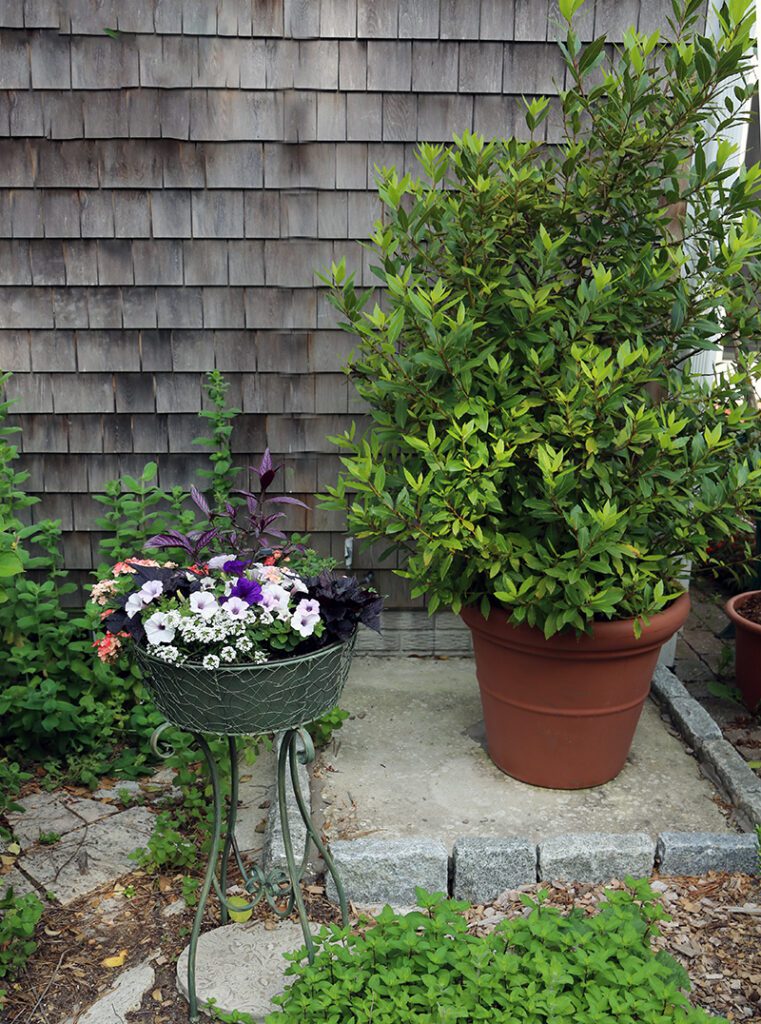
7. Plants Breaking Dormancy Early
You’ll find that plants that are kept in a cold garage or shed will start to leaf-out in February or March. Even without much light, these plants can tell that the days are longer and the temperatures higher, so they may put out leaves when it’s too early to pull them outside. Don’t worry about this. If you’re able to occasionally open a shed or garage door so that the plants get some direct sunlight and fresh air, do so. And when you’re ready to pull the plants out in mid-May, do so on a cloudy day and put those pots in a shady location for a couple of weeks. Once the plants have acclimated to winds and the day-to-night swings in temperature, you can move them into their place in the sun.
8. Top Heavy Plants Need Heavier Pots
If you’re growing a small tree, such as a dappled willow or Hydrangea paniculata tree, you’ll need to have a heavy pot or box that will keep that plant from blowing over. Cape Cod is windy, so potted plants need stability. Plants that will remain outside all year can be in a large, heavy container. Those that require moving to shelter in the winter can be grown in a lighter-weight plastic pot placed into a heavy, decorative container for the summer.
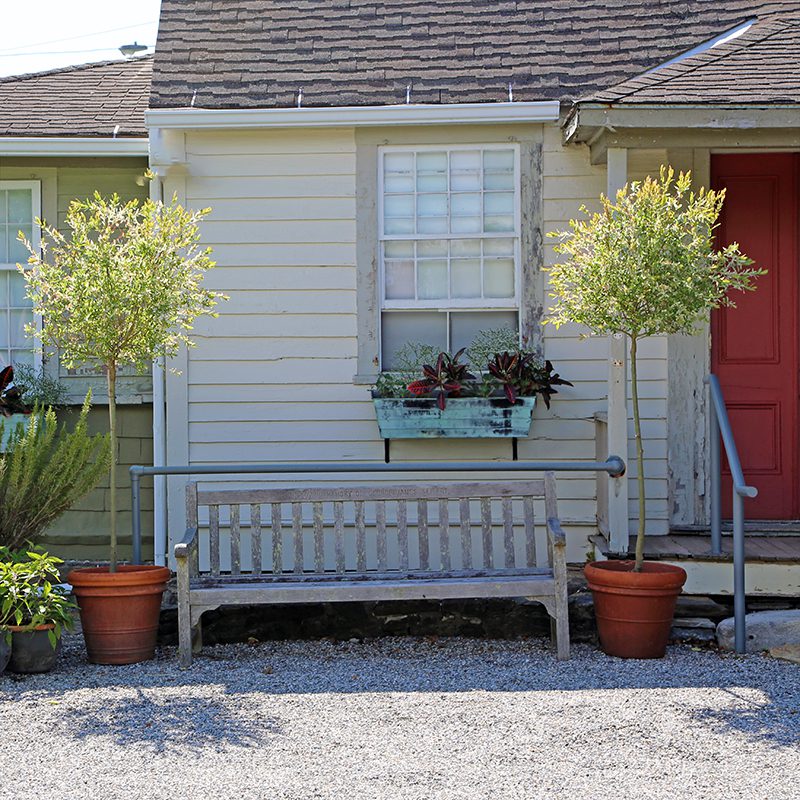
9. Suggested Shrubs & Trees For Containers
These plants are good for containers because of the colors and textures that they bring. Shrubs: smaller Hydrangea varieties such as Bobo, Fire Light Tidbit, Blue Jangles, Pop Star, Wee White, Mini Mauvette, and Tuff Stuff. Spirea with golden foliage such as ‘Magic Carpet.’ Dwarf conifers such as Hinoki false-cypress, dwarf Alberta Spruce, roses, and weeping larch or blue atlas cedar. Trees: dappled willow (Salix integra ‘Hakuro-Nishiki’), dwarf Japanese maples (Acer palmatum varieties), and panicle hydrangea grafted tree-forms (Hydrangea paniculata).
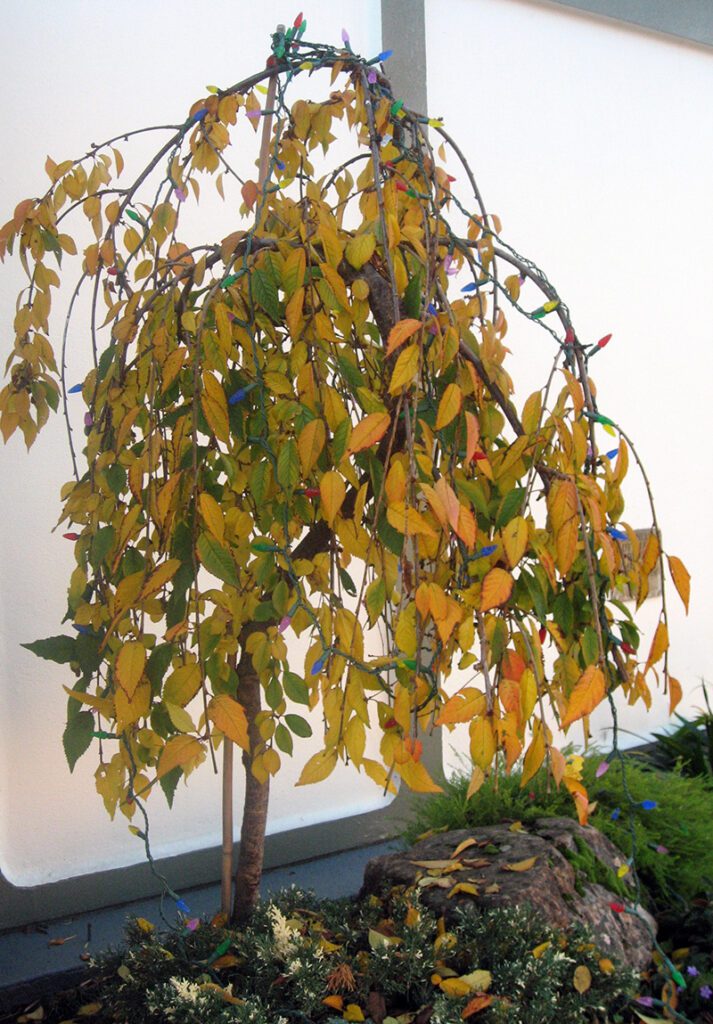
3 Comments
Leave a Comment
Subscribe To Our Newsletter
Sign up for our weekly email about sales and events.

Large clay pots give your plantings a “classic” look. Mix and match smaller pots with large ones. This fills otherwise empty spots on your patio, steps or deck. I’ve had great luck planting herbs like rosemary or sage in clay pots. A gentle touch as you walk by unleashes the aroma of mint or other wonderful scents. Purple sage in a grey clay pot has a great contrasting color combination. These need water everyday but will reward you with months of beauty and it’s great to have fresh herbs added to your Summer and Fall dishes.
I have a snow fountain i am going to try to air layer and want to put in a pot after it gets roots. Any sugestions?
Your first issue is the air layering – just don’t try to do too large a branch. That’s where people typically fail with air layering and rooting – they try to root a long piece for “instant results.” I’d try rooting a stem that is 18 inches long or smaller. Good luck!